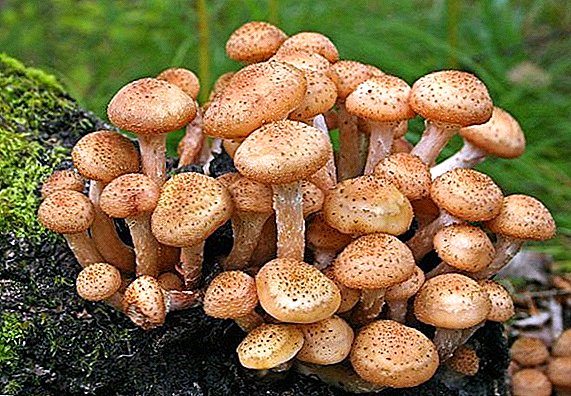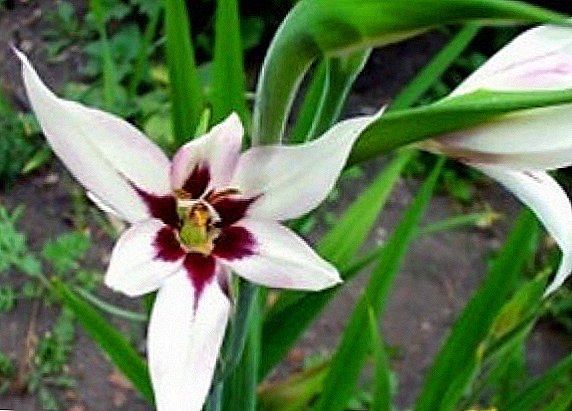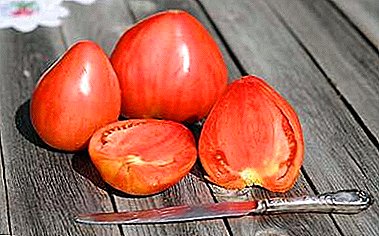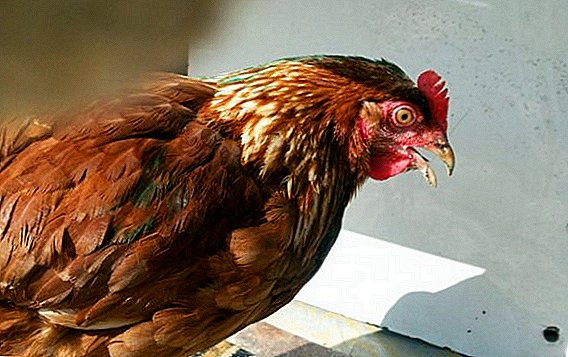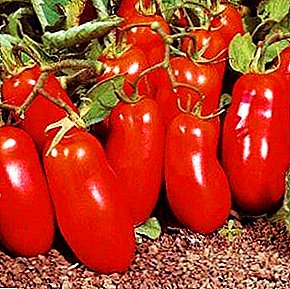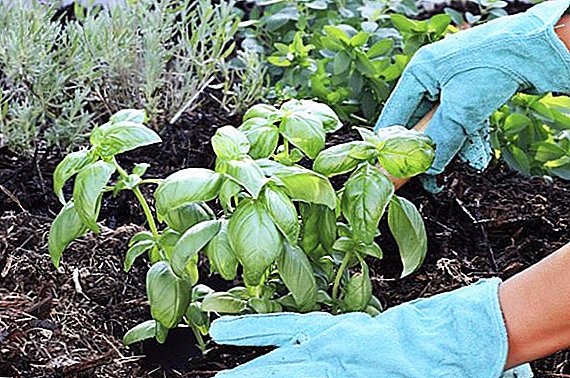 The average country plots can not boast of the presence of large areas in which you can land all that the soul desires. Therefore, the same beds have to be used for planting several crops per season. At the end of May and in the beginning of June, enough space should be freed up after harvesting early crops, and right now there is a dilemma: to leave them empty or try to grow something else. If you choose the second option, then we will tell you what can be planted in June in the garden. Vegetables and greens planted at this time still have enough chances for development and ripening. The main thing is to choose winter-hardy and late varieties that can withstand the unexpected onset of early frosts.
The average country plots can not boast of the presence of large areas in which you can land all that the soul desires. Therefore, the same beds have to be used for planting several crops per season. At the end of May and in the beginning of June, enough space should be freed up after harvesting early crops, and right now there is a dilemma: to leave them empty or try to grow something else. If you choose the second option, then we will tell you what can be planted in June in the garden. Vegetables and greens planted at this time still have enough chances for development and ripening. The main thing is to choose winter-hardy and late varieties that can withstand the unexpected onset of early frosts.
Planting greenery in June
Beginning of summer is miraculously suitable for growing greens, in particular dill, lettuce, basil, parsley, sorrel, celery, onion, garlic and fennel. Planted at this time spicy herbs can be used as food in two months.
Dill
For planting dill is best suited second decade of the month. It can be placed on the beds after the early crops: cabbage, radish, cucumber. Also, a good site for growing dill at this time will be the one that is under the sun only until lunch, and after noon is in the shade. 
Did you know? In order for the seeds of dill to sprout faster, they must be kept in hot water before planting.It is very important to sow the dill in a moist soil, and then water it regularly. When the land is dried, the plant will go to the trunk and will no longer give leaves. Before sowing, humus or complex fertilizers are introduced into the beds. In the future, ukropuzhat feed is not necessary. To plant as long as possible did not give umbrellas, it is necessary to avoid thickening of plantings. Dill grows quickly: 40 days go from planting to gathering greens. Autumn dill is more juicy and aromatic.
Basil
From what else to plant in the garden in June, you can advise basil. It is sown in the first half of the month. But not earlier than the 10th, as up to this point the probability of night frosts is still high. At an earlier date, the plant can be planted only in a greenhouse or greenhouse.
For basil, a well-lit area is removed, which will need to be fertilized with humus. Seeds are sown shallowly, a maximum of 1 cm. The wells are pre-watered well. Seeds are sown at a distance of 10 cm from each other. The aisle should not be narrower than 20 cm. 
Important! Works in the garden for planting various crops in June should be carried out on a dry and cloudy day or at sunset.The first shoots should be well watered, and reduce watering only during flowering. When the first true leaves grow, basil can begin to fertilize. For this purpose, complex mineral fertilizers are used. They are made twice a month.
For good development and growth of culture, the distance between adult plants should be 20-25 cm. Therefore, when the sprouts begin to grow, they will need to be thinned. The plant reaches its strongest aroma during the flowering period; it is then that it is cut to dry for seasoning.
Celery
Root celery is planted in the garden at the beginning of summer, in the first half of June. For him fit the light areas or the land in a light shade, which previously grew any vegetable crops.  Celery is planted from seedlings according to the 20 x 30 scheme. When planting, the earthen room is not destroyed. The plant does not need to be deeply deepened into the soil.
Celery is planted from seedlings according to the 20 x 30 scheme. When planting, the earthen room is not destroyed. The plant does not need to be deeply deepened into the soil.
Celery does not like waterlogging and droughts. It will need to be watered throughout the summer. In no case should spud. Celery leaves are used for food all season, tubers are dug out in mid-October.
Onion batun
Batun can be sown three times per season: in spring, summer and autumn. The second sowing of seeds produced in June and July. It can be planted in the place where the early vegetables grew, necessarily in partial shade, because under the bright sun it will fade. In the place where onions were previously growing, this plant is not recommended for planting.  Garden beds are composted. Seeds deepen into the soil by 1-1.5 cm, and at the end of sowing, water and abundantly irrigate the soil. After germination, they are thinned - the intervals between plants should be 9 cm. In the heat of the onion must be watered every other day, at a favorable time - twice a week. Obligatory as well as timely removal of the arrows is an essential element in the care of a batun. If not removed, the onions will become tough. For eating, feathers are cut off. After each pruning, the plants are fertilized with mullein or wood ash.
Garden beds are composted. Seeds deepen into the soil by 1-1.5 cm, and at the end of sowing, water and abundantly irrigate the soil. After germination, they are thinned - the intervals between plants should be 9 cm. In the heat of the onion must be watered every other day, at a favorable time - twice a week. Obligatory as well as timely removal of the arrows is an essential element in the care of a batun. If not removed, the onions will become tough. For eating, feathers are cut off. After each pruning, the plants are fertilized with mullein or wood ash.
Fennel
Vegetable fennel can be planted using seedlings, as well as directly into open ground. In the latter case, with a long light day, the plant can skip the growth phase of the “roach”, it is quickly formed and the shoots are stretched. This means that it is better to sow fennel at the end of June, when the length of the day begins to decline, that is, after the 22nd. For its landing open solar or slightly shaded areas are suitable.  The deepening of seeds when sowing should be 2 cm. The first shoots must be waited in 10-14 days. The distance between the plants should be left 40-50 cm. Fennel care is simple and consists in watering and occasional loosening of the soil.
The deepening of seeds when sowing should be 2 cm. The first shoots must be waited in 10-14 days. The distance between the plants should be left 40-50 cm. Fennel care is simple and consists in watering and occasional loosening of the soil.
And about what vegetables are planted in the garden in June, you can learn in detail from the following sections.
Planting vegetables in June
Vegetables in the first weeks of June can be planted beets, carrots, legumes, corn, radishes, turnips, tomatoes, cucumbers. Under the film planted eggplant and pepper.
There are several conditions that must be observed when planting vegetables in the garden at this time. In the event of a strong heat, vegetables help to cope with it by introducing supplements. For normal growth and fruit set during this period, fertilizers containing nitrogen, phosphorus, and potassium are recommended. In the second half of the summer feeding should be stopped.
It is also important not to overdo it with watering, even on particularly dry days. For carrots, squash, cabbage, cucumbers, tomatoes, zucchini, beets when planting them in the garden in June, two heavy irrigations per week are enough.
The soil under the vegetables should be loosened more often, always after watering. Root locations should preferably be covered from the sun. You can pour humus, peat or sawdust on the soil.
Carrot
Carrots sown in the first or second decade of the month. Choose areas where previously grew cabbage, potatoes, greens. They should be light, without any shadow.
If carrots are planted on food, then choose early varieties, for storage - medium and late. For planting during this period, suitable varieties such as "Flacco", "Incomparable", "Shantane", "Losinoostrovskaya." 
Did you know? Planting carrots in June allows you to avoid attacks on her carrot-flea.To quickly start the process of seed germination, they are kept for five days in warm water. Then for a day placed in a refrigerator for tempering at a temperature of 0 ° C.
In the beds make five longitudinal grooves or transverse grooves, leaving between them 18-20 cm. The dimples are watered. Seeds in them fall asleep at a distance of 1-1.5 cm from each other. Grooves mulch with peat and covered with foil. Shoots should heal in 5-6 days, after which they will need to be thinned. In the future, the soil should be regularly loosened. Carrot harvesting should be carried out before the cold weather in September.
Beet
Gardeners argue that you can perfectly plant in June and beets. It is placed in sunny areas. Seeds before sowing soaked in warm water, they must be sown in a dry form. Shoots are shown in 1.5-2 weeks. When they grow up to 3 cm in height, they will need to thin out. Watering is carried out every two weeks. 
Did you know? Beets, carrots and radishes planted in June are stored much longer and better than those sown in spring.It is important to harvest before the arrival of the first frost, in October. Beetroot is suitable for winter storage in dry sand.
Radish
Radish loves the sun, so it should be planted in the garden in open and well-lit garden beds. This vegetable culture can be sown in the place of cucumbers, potatoes, tomatoes.  Landing holes are dug 1-2 cm deep. They are placed at a distance of 4-6 cm from each other. Between the beds leave 8-10 cm. One seed is placed in each well, after which the beds will need to be covered. Radish requires frequent watering.
Landing holes are dug 1-2 cm deep. They are placed at a distance of 4-6 cm from each other. Between the beds leave 8-10 cm. One seed is placed in each well, after which the beds will need to be covered. Radish requires frequent watering.
Kohlrabi cabbage
The list of vegetables for planting in the garden in June can be continued with kohlrabi cabbage. It is grown with seedlings, which are recommended to be planted in open ground after June 10. Seedlings are prepared for 3-4 weeks. In the garden, it is better to plant in places where legumes, potatoes, beets, tomatoes, cucumbers, and onions grew before. Landing scheme: 40x25. After planting within two to three days, seedlings will need to be sheltered from the sun.  This type of cabbage is moisture-loving. Watering will need to be carried out every two to three days at first after planting and once a week thereafter, before maturation. Watering is accompanied by loosening the soil. After 20 days, hilling is performed. Repeat the procedure after 10 days. Also after 20 days, make the first feeding in the form of a liquid mullein.
This type of cabbage is moisture-loving. Watering will need to be carried out every two to three days at first after planting and once a week thereafter, before maturation. Watering is accompanied by loosening the soil. After 20 days, hilling is performed. Repeat the procedure after 10 days. Also after 20 days, make the first feeding in the form of a liquid mullein.
When planting from the 10th to the 20th, ripe stebleplods can be collected at the end of July. For consumption, they are ready to reach 8-10 cm in diameter.
Corn
For sowing corn fit sunny plot, protected from the wind. Cabbage, peas, potatoes, cucumbers, tomatoes will be desirable predecessors. It is necessary to sow corn at a time when the probability of frosts is reduced to zero. Usually - after the 10th day (the earth should warm up to + 8 ... + 10 ° С). High temperatures (above +30 ° C) when sowing corn adversely affect its fertilization. The plant is planted and seedling method, and sowing seeds in open ground. In the first case, seedlings are sown in April, and planted in the garden and June. Directly on the open beds sowing is carried out in June. Landing scheme: 30x50. Depth of embedding of seeds: 2-5 cm. 2-4 seeds are placed in each well. Crops are plentifully watered. A desirable measure would be to cover the beds with a film, which will allow the seeds to germinate faster and protect the sprouts from unforeseen frosts.
The plant is planted and seedling method, and sowing seeds in open ground. In the first case, seedlings are sown in April, and planted in the garden and June. Directly on the open beds sowing is carried out in June. Landing scheme: 30x50. Depth of embedding of seeds: 2-5 cm. 2-4 seeds are placed in each well. Crops are plentifully watered. A desirable measure would be to cover the beds with a film, which will allow the seeds to germinate faster and protect the sprouts from unforeseen frosts.
After the sprouts and the second leaf appear, the seedlings are thinned so that only one plant remains in each well. Watering is carried out once a week. Loosening and weeding the soil, hilling, feeding with potassium once every two weeks are necessary from care measures.
Legumes
In June, you can also sow beans and peas. The temperature of air favorable for their growth is + 20 ... +25 ° С, soil - + 12 ... +14 ° С. They can be preceded by cabbage, potatoes, tomatoes, cucumbers.
June beans can be planted twice: in the period from 17 to 19 number and from 28 to 30. They sow it in three rows in a checkerboard pattern. In the well put on two seeds, which must first be kept in a solution of potassium permanganate (1%). The depth of planting is 3-6 cm. The distance between the holes is -20-30 cm, between the rows - 30-45 cm.  In order not to care much about watering and loosening, it is desirable to mulch the soil. In the future, the beans will require regular weeding. Harvest can be cleaned from late August to early October, depending on the variety and weather conditions.
In order not to care much about watering and loosening, it is desirable to mulch the soil. In the future, the beans will require regular weeding. Harvest can be cleaned from late August to early October, depending on the variety and weather conditions.
Summer peas can be planted until July 10, while choosing early-ripening varieties for planting. Peas are sown in furrows, fertilized with compost or humus, at a distance of 5-7 cm from each other, deepening into the soil up to 5 cm. It is necessary to wait for shoots after 7-10 days.
Planting seedlings in open ground
From the third week of June, the most suitable period for planting seedlings of heat-loving plants begins. It is undesirable to do this until June 10, since in some regions night frosts are still possible. Although, of course, everything will depend on the climate of the region in which you live, and on the weather observed this season. To the chances of growth of seedlings in the open ground were high, it is desirable to temper it before planting. To do this, every day they try to take it out of the room onto the street. Hardening starts at half an hour, gradually increasing the time the seedlings stay in the open air for 10-15 minutes. So sprouts adapt more quickly to new growing conditions in the open ground, sun, wind, etc., and become more resilient to adverse weather conditions.
In any case, the first time young plants will need to cover in the daytime, because the scorching sun can destroy them. For this purpose, for example, paper caps are used. 
Important! It is necessary to protect seedlings from the sun with the help of shelters for the first two weeks after planting.An important condition for planting seedlings will be planting it in open ground in the evening, after the heat subsides.
Before planting, the plants carefully inspect and cultivate the diseased or too weak. The roots are shortened by one third. In well-moistened beds, sprouts are planted without destroying the coma on the root system. Do not over-deepen the plants, as this may cause a slowdown in their growth.
After planting, and for the next five days, the seedlings need to be watered well. You can also pour peat on the garden bed so that it retains moisture, while the earth is not covered with a crust.
Did you know? The fact that the seedlings got accustomed will be indicated by the appearance of two to three days after planting the morning dew at the edges of the leaves. This process is called guttation.
Pepper seedlings
Pepper seedlings begin to harden 10-15 days before planting in open ground. It can be transferred to the garden from the first week of the month. However, one should pay attention to the temperature of the soil and the readiness of the sprouts for planting - they should have 8-10 leaves and several buds, as well as reach a height of 20-30 cm.  Landing should be deep, in well watered soil. In the future, pepper should also be watered abundantly, using warm water. The distance between plants should be no less than 40 cm. It is desirable to remove the first buds.
Landing should be deep, in well watered soil. In the future, pepper should also be watered abundantly, using warm water. The distance between plants should be no less than 40 cm. It is desirable to remove the first buds.
Tomato seedling
Tomato seedlings should be planted in the first weeks of June (the ground should warm up to +12 ° C). A well-lit area will be suitable for planting, but if some plants were growing on it before, it is advisable not to plant tomatoes in the same beds.  Sprouts choose strong, with well developed roots. The optimal length of the stem should be 20 cm. Use the vertical method of landing. If the seedlings are overgrown, then it is planted with a slight slope. It is better if the landing will be carried out in a well-watered soil.
Sprouts choose strong, with well developed roots. The optimal length of the stem should be 20 cm. Use the vertical method of landing. If the seedlings are overgrown, then it is planted with a slight slope. It is better if the landing will be carried out in a well-watered soil.
In the first days after planting, the plants may have a sluggish appearance, but in the future they must begin and develop normally.
Cucumber Seedlings
Even in June, it is better to plant cucumber seedlings in greenhouses and greenhouses, since this is a very heat-loving culture. For open ground pick cold-resistant varieties. At the same time pay attention to night temperatures. When it becomes cold, it will be necessary to cover the seedlings with foil, paper caps, etc.  Planting is carried out on high beds in a well-moistened soil. The distance between shoots should be 50 cm.
Planting is carried out on high beds in a well-moistened soil. The distance between shoots should be 50 cm.
If planting cucumbers under film is originally planned, the beds will need to be prepared in advance. They are made 80–90 cm wide, and small grooves with a width and 30 cm depth are dug in the center. Fresh manure is first brought in and then, across the entire width, a 20-centimeter layer of humus is filled. The beds are covered with a film using a frame. Three days later, cucumber seedlings are planted on the prepared soil, along the edges of the beds. The same method of planting can be applied to tomato seedlings.
Cabbage seedlings
White cabbage seedlings are prepared for planting within 60 days. In early June, medium and late varieties are transplanted into the ground. The fact that the seedlings are ready for planting should be indicated by the presence of 4-6 leaves and a stem height of 15-20 cm. The planting scheme can have several options: 70x30 cm, 50x40 cm, 50x50 cm, 40x40 cm.  Landing is well watered, 1-2 times fertilized, spud. Crop harvested in late autumn. The higher the density of the head, the better the cabbage will be preserved.
Landing is well watered, 1-2 times fertilized, spud. Crop harvested in late autumn. The higher the density of the head, the better the cabbage will be preserved.
At the beginning of summer, empty beds can also be decorated with ornamental flowering plants. Of the flowers that can be planted in the country in June, mention should be made of balsam, begonia, asters, cannes, amaranth, marigolds and many others.



